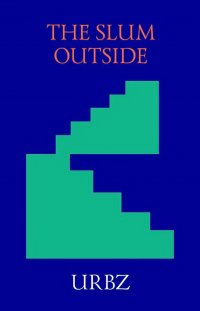The Slum Outside = Трущобы снаружи
Покупка
Тематика:
Теория и история архитектуры
Издательство:
Стрелка Пресс
Год издания: 2017
Кол-во страниц: 59
Дополнительно
Вид издания:
Научно-популярная литература
Уровень образования:
Профессиональное образование
ISBN: 978-5-906264-27-5
Артикул: 688024.01.99
Matias Echanove and Rahul Srivastava joined forces through their blog
airoots/eirut in 2006. They have since written extensively on urban themes and
are working on projects involving architecture, planning, pedagogy and
technology. They run the Institute of Urbanology in Mumbai and Goa and are
co-founders of urbz.net, an experimental platform for collaborative practice in
urban development.
Тематика:
ББК:
УДК:
ОКСО:
- 07.00.00: АРХИТЕКТУРА
- ВО - Бакалавриат
- 00.03.07: Политология
- 07.03.01: Архитектура
- 07.03.03: Дизайн архитектурной среды
- ВО - Магистратура
- 07.04.01: Архитектура
- 07.04.03: Дизайн архитектурной среды
ГРНТИ:
Скопировать запись
Фрагмент текстового слоя документа размещен для индексирующих роботов
ЭЧАНОВЕ МАТИАС, ШРИВАСТАВА РАХУЛ ТРУЩОБЫ СНАРУЖИ 3-е издание (электронное) Москва «Стрелка Пресс» 2017
ECHANOVE MATIAS, SRIVASTAVA RAHU THE SLUM OUTSIDE 3-rd edition (electronic) Moscow Strelka Press 2017
УДК72
ББК 85
E19
Echanove, Matias.
E19 The Slum Outside = Трущобы снаружи [Электронный ресурс] / M. Echanove, R. Srivastava. — 3-rd ed. (el.). — Electronic text data (1 file pdf : 59 p.). — М. : Strelka Press, 2017. — System requirements: Adobe Reader XI or Adobe Digital Editions 4.5 ; screen 10".
ISBN 978-5-906264-27-5
Matias Echanove and Rahul Srivastava joined forces through their blog airoots/eirut in 2006. They have since written extensively on urban themes and are working on projects involving architecture, planning, pedagogy and technology. They run the Institute of Urbanology in Mumbai and Goa and are co-founders of urbz.net, an experimental platform for collaborative practice in urban development.
УДК 72
ББК 85
The source print publication: The Slum Outside / M. Echanove, R. Srivastava. — Moscow : Strelka Press, 2014. — 60 p. — ISBN 978- 0-9929-2291-7.
ISBN 978-5-906264-27-5
© Strelka Institute for Media, Architecture and Design, 2014
Mahatma Gandhi Road, or MG Road, is one of the busiest thoroughfares in Dharavi. Photograph: Niccolo Morgan Gandolfi
INTRODUCTION
Dharavi, in the heart of Mumbai, is supposed to represent the quintessential Asian slum. Crowded streets and busy markets; domestic workshops cheek by jowl with sweatshops producing both real and fake Pepe jeans; brick houses rising as high as their microscopic footprints allow; high-rises mushrooming here and there like gigantic shacks; schools in Kannada, Tamil, Hindi, English, Marathi, Urdu and other languages, usually with more than 50 pupils per class; temples of every Buddhist and Hindu denomination; flamboyant mosques so crowded that people have to pray on the streets during nam az; old churches with full congregations - remnants of the region’s seventeenth-century Portuguese history - and new evangelical missions converting low-caste Hindus by the dozen; community toilets that double up as marriage halls; piles of garbage waiting to be picked over by scavengers; open drains running along narrow back streets; thousands of water pipes branching off in every direction.
Dharavi invariably confuses those eager to capture its reality in shorthand. Visitors looking for an essence of the place often land on its edges and corners, in spots that most Dharavi residents themselves have seen only on TV. They may be rewarded for their intrepidness by the sight of barefoot children walking on water pipes against the obligatory backdrop of garbage - a cliche that resonates so powerfully with familiar discourses on poverty and inequality that it obliterates the depth and complexity of the place. Dharavi is diverse and rapidly transforming, and it deceives as much as it overwhelms. It is an enigma that cannot be resolved by simply labelling it one thing or the other.
From the rooftop of Mohan Kanle’s two-storey house, the neighbourhood seems part of the immutable story of urbanism, recalling medieval Italian towns, Istanbul’s bazaars, the by-lanes of Benares, old Delhi, Guangzhou’s urban villages and even Tokyo’s dense residential suburbs. From this vantage point, it seems embedded
— 6 —


